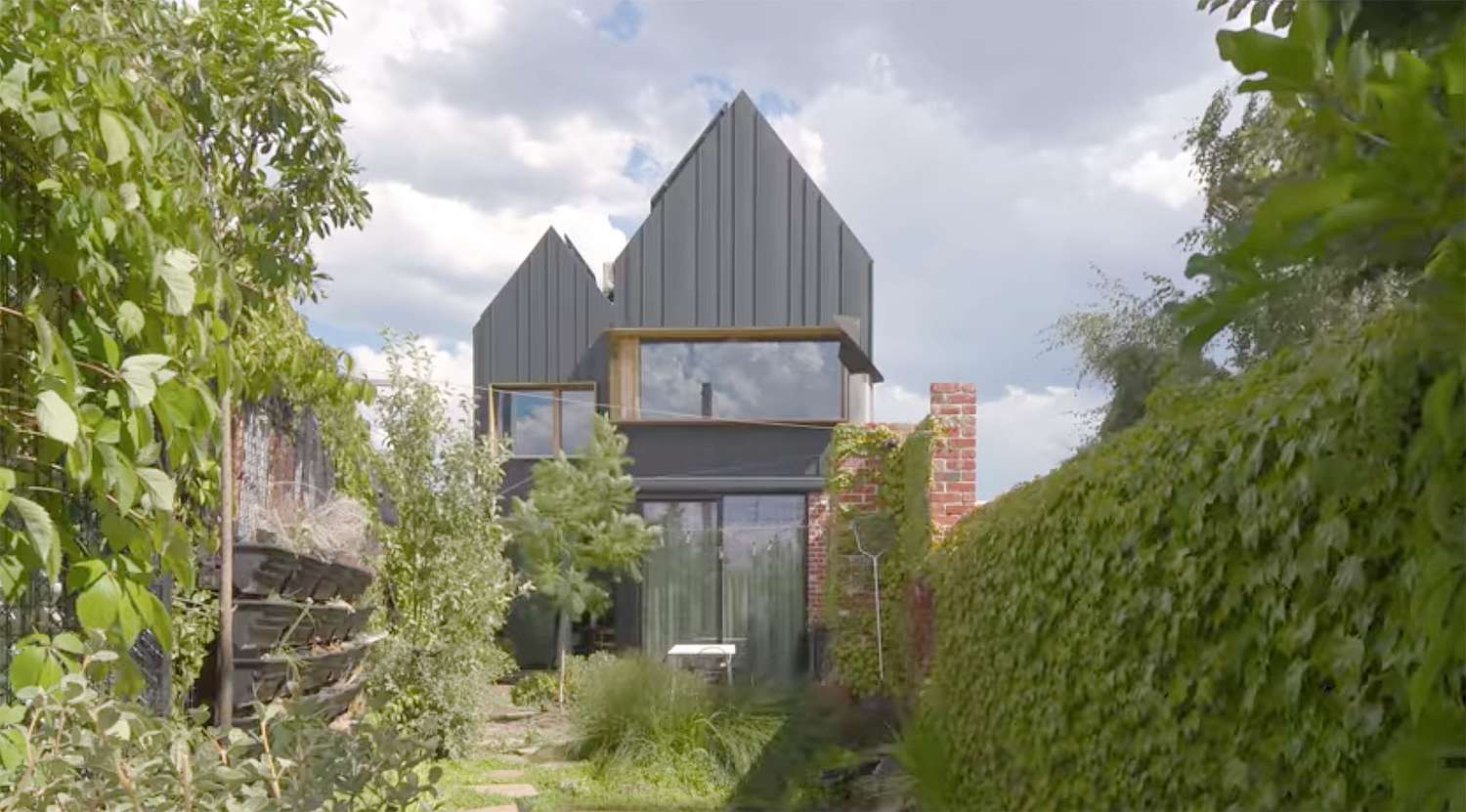We’ve been big fans of Passive House (or Passivhaus as it was originally called in Europe) for years. That’s because Passivhaus is an ultra-energy-efficient building standard that is designed to minimize things like air leakage and how much energy is consumed, using elements like high-quality windows and lots of insulation and ensuring that the building envelope is as air-tight as possible. A house built to Passivhaus standards would be the epitome of what might be (non-pejoratively) called a “dumb home“—it’s simple, it works, it’s more resilient and less carbon-intensive, and there’s no need for lofty net-zero aspirations that are aided by complicated smart home technologies for it to self-regulate.
But if there was one criticism of Passivhaus, it would be that Passivhaus homes tend toward boxy and boring forms. However, this is an unfair characterization, as there are plenty of beautifully done Passivhaus buildings out there if you look.
Now, we can add another example of a beautiful Passivhaus home to the list: the Hütt House. Created by Australia-based architects Marc and Felicity Bernstein of Melbourne Design Studios as their family home, this award-winning project is designed with biophilia in mind, and includes noteworthy features like a cross-laminated timber (CLT) structure, an aquaponics garden and a green roof. We get an insightful tour of this carefully designed house via Simple Dwelling:
The home sits on an awkwardly shaped lot right beside the train tracks—making the most out of underutilized land. The garden walls are made with recycled brick, while the exterior of the home is clad with dark metal panels. There are solar panels on the roof and a leafy garden and pond in the back, and inside there are living walls and nets for lounging in. These whimsical touches throughout the project are what make it unique, as Marc Bernstein explains:
“The idea was to create a highly sustainable home, but also a very playful, fun and adventurous house. Something that we could use as a showcase to show people what is a Passive House, how does a Passive House work?”
Simple Dwelling
The interior is designed to maximize the feeling of spaciousness, despite the small overall footprint.
Simple Dwelling
This is accomplished by overlapping various spaces to create multifunctional zones, like creating a seating zone in the sunken living room that overlaps the circulation out to the rear garden.
Simple Dwelling
The fireplace here has been placed so that it can be seen from both the sunken lounge, and the dining area.
Simple Dwelling
To boost that biophilic experience of space, the fireplace has been topped with a row of greenery.
Simple Dwelling
The kitchen is tucked at the other end of the ground floor, and features a sleek, minimalist aesthetic with natural stone countertops, while the wooden flooring—some of which wraps up to cover parts of the walls—is Cradle-to-Cradle certified.
Simple Dwelling
There is also a luxurious bathroom here, with a round soaking tub, and a living wall full of plants to give that experiential link to nature in bloom.
Simple Dwelling
Of course, what makes this project Passivhaus comes from what’s mostly invisible: the triple-glazed windows, an air-tight building envelope, a heat recovery ventilator system, and carefully detailing architectural elements in order to eliminate any thermal bridging, which can cause up to 30 percent of heat loss in conventionally built homes. Moreover, despite the home’s location right next to the train tracks, it’s relatively quiet because designing to Passivhaus standards results in a large reduction in noise.
Simple Dwelling
Upstairs, there are four bedrooms—one for each of the architects’ three children and a primary bedroom. Seen below is one of the children’s bedrooms, each of which was conceived as a place to sleep, rest and play, thanks to the installation of these nets on the mezzanine level of each room.
Simple Dwelling
These mezzanines—which stretch up to the top level to make the most out of the tall ceiling heights are made possible by the solid, whitewashed CLT structure that eliminates the need for a conventional roof structure.
Simple Dwelling
Even in the primary bedroom, the notion of biophilia is alive and well, with a planter full of greenery integrated into the headboard and its connection to a roof garden.
Simple Dwelling
On the top level, we have a rumpus room for the family to use as a place to work, study, and play. There are several big windows here that let plenty of natural daylight in.
Simple Dwelling
There is also a bathroom with a lovely, freestanding brass and marble sink that Felicity designed.
Simple Dwelling
Having built their experimental Passivhaus home, the couple is now trying to scale up their vision, offering Hütt Panel Systems for carbon-zero construction in the form of two prefab construction systems that meet Passivhaus standards. Ultimately, the Bernsteins designed their home with a much larger picture in mind, as Felicity explains:
“We have a responsibility not just for our life, but also for future generations. [..] I think with a house, which is a big investment, you want to make sure you take it seriously. A house has a major impact if you do it wrong, because there’s a lot of resources going into it. But if you do it right—and that’s what we try to show with our house—then you can actually heal the planet instead.”
